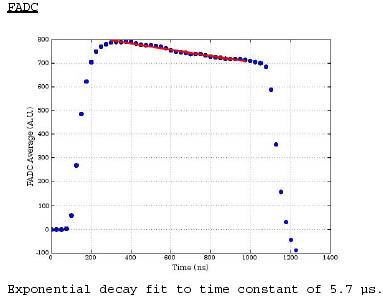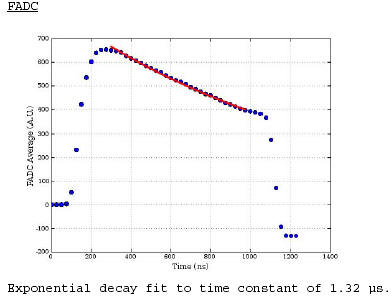

04/13/2005 N. Kitamura
I am just compiling data that other people have taken. Thanks Andy, Kael, and Chris!
Kael's report on DOM droop measurement. The response of the DOM to a square light pulse (1 usec wide), as seen by the FADC and the ATWD ch0, at +25C and -45C. Below is the FADC data taken from his report.
| +25C | -45C |
 |
 |
Andy Laundrie's Measurement of toroid response at +20C and -45C.
| Frequency Response 1 (30kHz - 30MHz). The low frequency cut-off goes up by a factor of ~4 as the temperature is lowered from RT to -45C. Since the coupling is mainly magnetic at low frequencies, the decreasing permeability of the toroidal core with temperature can explain the result. |

|
| Frequency Response 2 (3MHz - 300MHz). The high-frequency response does not depend on temperature, because the dominant factor is the capacitive coupling of the bifilar winding. |

|
| The Response of the Toroid to a 1 usec-wide Square Pulse shows a marked droop at low temperature, as expected from the increased low-frequency cut-off. |
 Old Measurements (September 2003) did not catch the droop at low temperature, because the test pulse was only 30nsec wide. Only a slight (~6%) decline in the amplitude response as the temperature was decreased from RT to -30C was reported. See the link below for more. http://icecube.wisc.edu/~kitamura/Toroid/t2/more_toroid_measurements.htm
|
Can We Blame the Toroid for All?
This is redundant, because Andy's response measurement says enough. Anyhow...
Let's model Andy's frequency response #1 as
w0 / 2pi = 120 kHz
It's frequency response looks like:

| It's response to a square pulse (width T):
|
|
|
|
T = 1 usec |
In time domain,

This demonstrates that the toroid's low-frequency response alone causes as much as 50% of droop at the end of the 1 usec pulse.